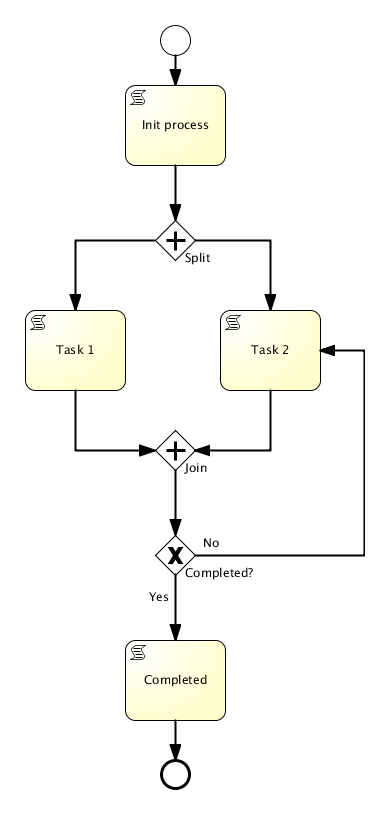People asking for the differences between BPMN and BPEL they often hear BPMN is graph oriented whereas BPEL is block oriented. But what does that actually mean and why is it important?
Block orientation means that there is no way back in the process like a goto statement. In BPEL a common workaround is to use loops to move backwards in a process. But this approach is cumbersome and creates non intuitive models. Block orientation feels natural for developers as it is how programming languages such as Java or C# work.
For business people this feels odd, cause it is not how they perceive processes in their daily business.
Business people regularly need a way to say “Oh wait, there is a problem in step X, let’s go back to step A and fix it.”.
Graph orientation means that the process can flow between tasks even backwards. In terms of Business/IT aligment graph orientation is a clear advantage as it is closer to how people think and work.
Because BPMN is graph oriented it is way better suited for business analysts than BPEL. Does that mean that with BPMN business people can create executable processes? In theory yes! And in reality?
As long as the BPMN model is purely prescriptive, people can freely connect tasks in all directions (more or less). But if the aim is to create executable process models, the BPMN semantics come into play. Although your modeling tool might allow to create all kind of links, process engines are very strict in what they can do. An executable model is like source code and as such follows strict rules.
Let’s create a simple example:
For an analyst this might look like a perfectly modeled process. The problem is that it ignores the BPMN semantics. Neither the modeling tool (Signavio) nor the process engine (Activity) complains, but at runtime the process runs into a deadlock situation. Why that?
The parallel gateway used to join the process after the execution of Task 1 and Task 2 expects two tokens. On the first run it gets two tokens and everyting is fine. If the completed gateway continues with Task 2 on the second run, the joining gateway receives only one token and the process is on hold cause the second token never arrives.
Conclusion:
If the aim is process automation, it is essential that the process strictly adheres to the BPMN semantics.
For most business oriented people (at least the ones that I know) this is new completely new terrain.
